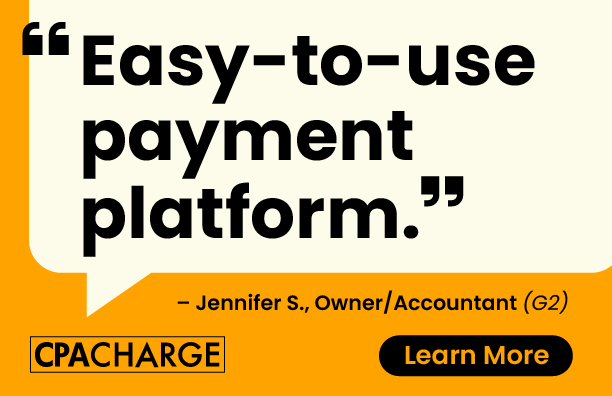
June 26, 2024
Many reports have emerged about the accounting profession and its need for change. In brainstorming topics for this month's blog on leadership, I couldn't help but ponder how professionals develop leadership skills in a profession that is at a crossroads. Perhaps aspiring leaders should break the mold and help rebuild the profession instead of waiting to see where the profession heads. Eureka! That's it! Breaking the Mold of the Accounting Profession would be the title of the June leadership blog. I thought I was really on to something. As I started my research, I was surprised to find I was not the only one thinking along these lines. Immediately, I found an article by Alan Whitman that encapsulated the ideas swirling around in my mind, There is a better way: Breaking the mold of public accounting. The profound part is he wrote the article in 2022 before all the startling statistics and research on the accounting profession flooded the airwaves. I thought to myself, "Wow, this guy gets it! I am definitely going to quote him in this blog." So, I jumped down the Alan Whitman virtual rabbit hole and am now inviting you to join me in his wonderland of ideas and the role we can all play in creating a new dynamic accounting profession.
According to Mr. Whitman, entities that successfully BREAK THE MOLD™ are the ones who will thrive and redefine the future. They will control their destiny and be able to grow on their terms. This principle applies to organizations, individuals and leaders.
Let's begin by defining a mold. A mold uses the same process to churn out the same result until someone breaks it and creates an entirely new mold or modifies it enough to produce a different end product.
How Does One BREAK THE MOLD™?
What Might BREAKING THE MOLD™ Look Like?
What is a BREAK THE MOLD™ Mindset?
Even if you are succeeding at the moment, what about the next time a market correction happens or we're faced with a new pandemic-like phenomenon? We must be willing to challenge ourselves and those around us to move past assumptions, be curious, and explore new ways of doing things.
The BREAK THE MOLD™ mindset is about a willingness to try new things, take risks, and not fall into following the long-time conventional ways of thinking. What happens if you aren't ready to BREAK THE MOLD™? Likely, you will be more vulnerable to outside forces controlling or influencing the decisions you may have to make in the future.
Whether you're a CEO, middle manager, or aspiring leader, we hope you can use the information provided to help you and your organization be brave enough to try something new and, in doing so, become the relevant and sustainable organizations you aspire to be.
Acknowledge Meaningful Progress is a Collective Effort
Let's dispel this idea that CEOs are the Wizard of Oz or Queen of Hearts, making sweeping decisions that dictate the direction of the organization. Great leaders empower the leaders in their organizations (or teams) to get things done. It's a collective effort. Sit in meetings with your leadership team, talk with people one-on-one to uncover great ideas, and listen to understand how you can support people in accomplishing things. Then, help pave a pathway for people to execute—sometimes, that means getting out of the way. The most meaningful progress doesn't come from one person; it's a collective effort. There's great power in a team.
Be Okay with Innovation Being Inherently Risky
The most progressive organizations aren't looking to play it safe. Every organization that aspires to BREAK THE MOLD™ has to take risks. Ideally, they are calculated risks—they've been thought through, and the potential downside has been mitigated. At some point, though, you have to jump without knowing exactly what's going to happen. Without risk, you're unlikely to achieve any sort of differentiated results. It's the ante to play if you aspire to be great.
Don't Let Blockers & Inhibitors Stop Your Progress
"Blockers," or inhibitors, actively oppose the strategies being employed. For example, senior leaders acting counterproductive to the organization's strategy. That's a HUGE problem. Many people within the organization see and are influenced by those senior leaders. When leading new initiatives, you have to be intentional about addressing these people no matter how "brilliant" and "highly experienced" they are. They often stand in the way of executing strategy, and you better believe other people in the organization are listening to them. A faction of people standing in the way of executing strategy is a significant problem. Do you realize that by not having a difficult conversation with them, you are letting them hold the organization's strategy hostage? A good way to approach having these conversations is to focus on the macro—focus on the strategy. Start by emphasizing the person's role in accomplishing the project or strategy, not their role in accomplishing something for YOU. Keep the focus on the strategy, not the thing they are doing or not doing that is standing in the way of executing it. Innovation is difficult enough... Everyone needs to be rowing in the same direction in order to bring progressive ideas to life.
"If you can't change the people, change the people." ~Stephen Chipman
Don't Get Stuck, Get Stuff Done
Where in this equation do you have work to do? What's a step you can take to move in the right direction? No matter your title, you can be the reason your organization takes meaningful steps toward achieving something special.
A Mindset of Possibility
To shift people from a mindset of focusing on the past to a mindset of possibility, sometimes it starts with saying…"Let's design this from scratch." It allows people to remove their mental roadblocks and throw traditional ways of thinking out the window so we can define a more progressive and forward-thinking WHAT. Let's define what the ideal path is, and then we can we can address whatever roadblocks might be in the way. This puts people in the right mindset to approach the next question...
Ask THE Question
If you want to embrace the art of the possible and think differently, start by asking the question, "What will it take?" Notice how this question doesn't allow for one-word answers. It challenges people to think. It makes us define and map out a solution and doesn't allow us to hide behind convention, and the roadblocks that we foresee will get in the way. It brings in possibility. And innovation, progress, and the ability to BREAK THE MOLD™ are built on a foundation of possibility. At this stage, no answer is a wrong answer. It's about designing a new solution, assuming we have no barriers or constraints. We'll deal with those later.
The Benefits of "What Will It Take"
You can learn a lot about yourself through asking this question, and if done well, you can unlock a whole new level of innovation. Here's what you can learn:
You'll notice these things have nothing to do with ability and everything to do with mindset. We often get stuck in convention not because of a lack of talent or ability (although it could be). Often, it's because we enter into these conversations with the wrong mindset, and when we change our mindset, we change the outcomes.
What Seems Simple & Easy Often Isn't
This whole WWIT framework may seem simple, but it is not. What is standing in your way of doing the action? What is the cause of your action or inaction? That's what we want to figure out when we go through a WWIT exercise. Executing this framework properly can reward you with differentiated and meaningful results. And that's how you, as an individual, can BREAK THE MOLD™.
The things that make a great CEO are the same things that make a great LEADER—no matter the title.
Align People to a Vision
Great leaders need to organize and inspire people to strive toward a destination different from the current reality. If you're the CEO, you are responsible for setting the vision of the entire organization (with help—you don't have to do it alone). If you aren't the CEO, you have the opportunity to rally your team (however big or small) around the company's vision and goals. In fact, you even have the opportunity to tailor the company's vision to make it more tangible and relevant to your department/team etc.
People need to know where we're going and believe you are the person to lead them there. So you've got to be able to communicate the destination and make it feel real for people. Take time to understand the organization's vision and strategy and think about how YOUR team plays a role in helping the greater org achieve it. Then, help your team members understand how THEY can make an impact within your department and, therefore, make a greater impact on the organization. If your team makes a meaningful contribution to your company's vision and goals, good things should happen for all of you.
Push People to Achieve Things They Never Thought Were Possible
The role of a CEO (and therefore any leader) is to enable people to do more than they think they can do. The greatest leaders are multipliers for their teams. They enable the team to achieve 3x, 5x, 10x what they thought was possible.
Sometimes, that means helping people do things they aren't even aware of doing. We all have limiting beliefs. We all suffer from imposter syndrome and it often gets in the way of elevating ourselves to achieve more or pursue greater opportunities.
Be intentional about:
This is often one of the most fun and rewarding parts of being a leader. You have the opportunity to elevate people to greater impact and play a pivotal role in their professional and personal development.
Prioritize the Development of the People You Lead
Many one-on-ones between leaders and their reportees are focused on directing them and talking about things that have already happened. That's not DEVELOPMENT….or leadership. That's focusing on what's urgent (and often in the past), not what's important.
Development means taking intentional time to work on the business AND work on the person. How is the person doing? What do they aspire to do within the organization? What areas are they looking to gain more experience? What situations can you talk through together? How can you help them achieve more? That's development.
If your time with your team members is full of status reports and reviewing documents or decks, you're missing the opportunity to help them grow exponentially. Great leaders prioritize the development of the people they are leading.
Have the Necessary Difficult Conversations
Just because they are hard doesn't mean they aren't necessary. It's often the hard conversations that illuminate people's blindspots and shortcomings. And although it may hurt in the short term, it allows people to grow. If we hold back from having these conversations then we aren't allowing people to receive feedback and make incremental changes. Those small changes can lead to massive growth over time.
Great Leadership Doesn't Include a Title
Your ability to lead people and create differentiated results doesn't hinge on a title. It starts with making the intentional choice to act as a leader.
When I initially set out to write this blog, I intended to write my thoughts and pepper in some insights from Mr. Whitman. However, I found his thoughts to align so well with my own that this month's blog on leadership is a compilation of several articles written by Alan Whitman. If you have not read his work, subscribe to The Art of Possible his weekly email series, or follow him on LinkedIn, I suggest you do so. It is unlikely this will be the last time you hear his name or his progressive insights to BREAK THE MOLD™ and move the accounting profession forward through a proactive approach for organizations, individuals, and leaders.
A BIG thank you to Alan Whtiman for allowing us to showcase his work and insights in the KSCPA blog. We sincerely appreciate the contributions of visionary leaders like him who are willing to boldly lead the accounting profession into a vastly changing future.
Stay tuned in July for Is an Accounting Reboot Imminent Part Three | Breaking the Mold and Rebuilding the Accounting Profession - What Role Do Computers and Other Supporting Characters Play in a New Accounting Paradigm?
Article curated by Liz Gaume, Director of Membership and Marketing, KSCPA and written by:
 |
Alan Whitman, CPA, CGMA Alan Whitman is a seasoned executive and highly recognized leader known for his ability to inspire and navigate people around bold ideas and uncomfortable change.During his nearly decade-long tenure as Chairman and Chief Executive Officer of Baker Tilly US, the CPA and accounting firm grew revenue by 3x, went global for the first time while expanding into 15 new domestic markets, and successfully completed over 20 mergers & acquisitions in a matter of a few years.Alan now operates an advisory business where he shares his experience to help CEOs and their key stakeholders BREAK THE MOLD™ of conventions to inspire and navigate intentional change.The insights and lessons found in these emails are inspired by Alan's personal notebook entries. |
The Ignite blog is an official publication of the Kansas Society of CPAs, Copyright 2024.
THANK YOU TO OUR SPONSORS & PARTNERS IN ACCOUNTING EXCELLENCE!
 |
 |
 |
 |
Would you like to showcase your business by sponsoring the Ignite blog? Click here for more information.
© Copyright 2025 KSCPA | All Rights Reserved